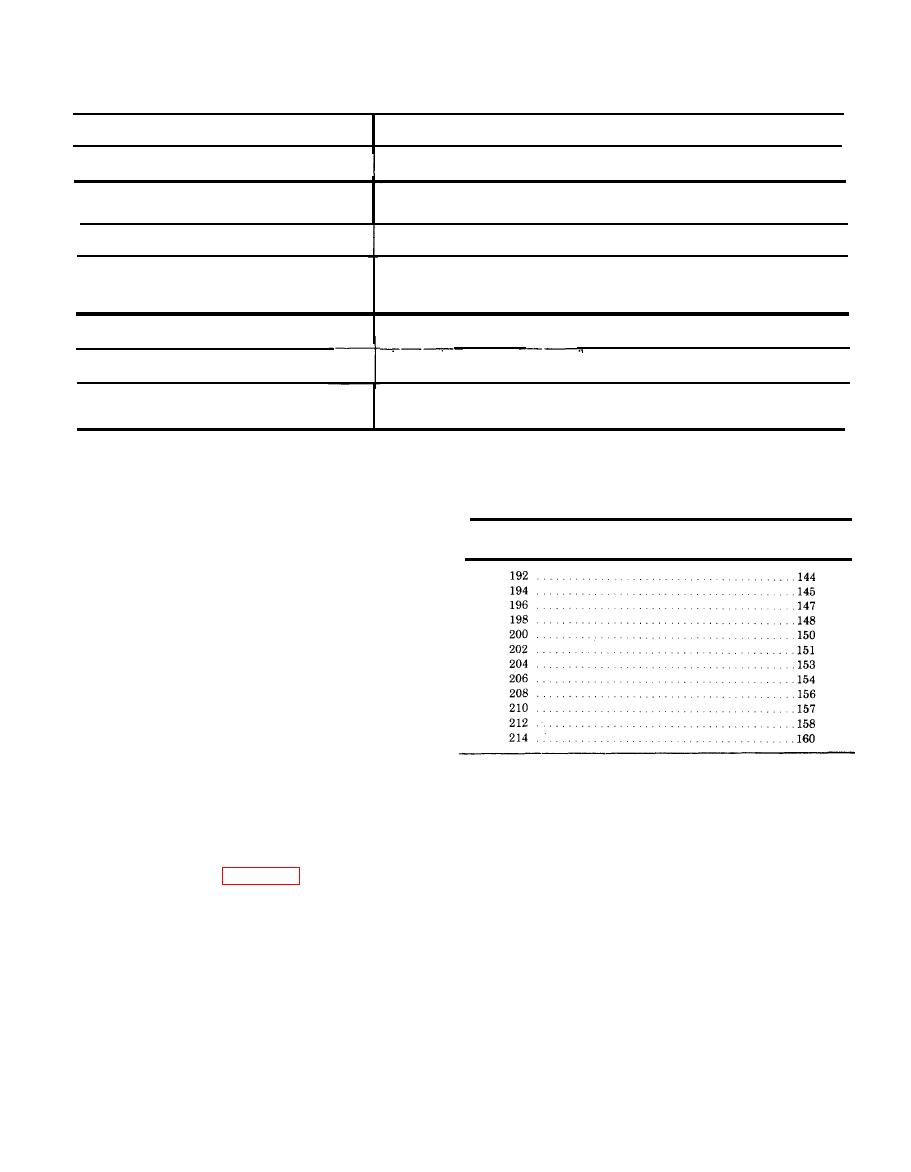 |
|||
|
|
|||
|
Page Title:
Table 6-1. Manifold Vacuum Readings. |
|
||
| ||||||||||
|
|
 TM 10-3930-633-34
Gage Reading (inches Hg)
Engine Condition
(See footnote at end of Table)
Normal.
17 or more.
Low and steady.
Loss of power in all cylinders caused by late ignition or valve timing, or loss of
compression due to leakage mound the piston rings.
Very low.
Manifold. carburetor or cylinder head gasket leak.
Needle fluctuates steadily as speed increases.
A partial or complete loss of power in one or more cylinders caused by: a
leaking valve, cylinder head or intake manifold gasket leak, a defect in the
ignition system or a weak valve spring.
Gradual drop in reading at engine idle.
Excessive back pressure in the exhaust system.
_
-
Intermittent fluctuation.
An occasional loss of power possibly caused by a defect in the ignition system
or a sticking valve.
Slow fluctuation or drifting of the needle.
Improper idle mixture adjustment, or carburetor spacer or intake manifold
gasket leak.
NOTE
Allowance should be made for the effect of altitude on the gage reading. The engine vacuum will decrease with an increase in altitude.
b. Procedure.
(1) Be sure the battery is good. Operate the
engine until normal operating temperature is
Maximum
Minimum
PSI
PSI
reached. Turn the ignition switch off. Loosen the
spark plugs, blow out any dirt in the spark plug
wells, then remove the plugs.
(2) Set the carburetor throttle and choke
plates in the wide open position.
(3) Install a compression gage in No. 1
cylinder.
(4) Crank the engine (with the ignition
switch off) at least five (5) pumping strokes and
record the highest reading indicated. Note the
approximate number of compression strokes
required to obtain the highest reading.
.
d. Diagnosis. If one, or more, cylinders read
(5) Repeat the check on each cylinder
low, squirt approximately one (1) tablespoon of
cranking the engine approximately the same
engine oil on top of the pistons in the low reading
number of compression strokes.
cylinders. Repeat compression pressure check on
compression
c. Results. T h e indicated
these cylinders.
pressures are considered normal if the lowest
(1) If compression improves considerably,
reading cylinder is within 75 percent of the
the piston rings are at fault.
highest. Refer to table 6-2 for pressure limits
(2) If compression does not improve, valves
between cylinders. Variations exceeding 75
are sticking or seating poorly.
percent implies an improperly seated valve or
(3) If two adjacent cylinders indicate low
worn or broken piston rings.
compression pressures and squirting oil on the
Table 6-2. Compression Test Pressure Limits.
pistons does not increase the compression, the
Minimum
Maximum
cause may be a cylinder head gasket leak between
PSI
PSI
the cylinders. Engine oil and/or coolant in the
186 . . . . . . . . . . . . . . . . . . . . . . . . . . . . . . . . . . . . . . ...140
188 . . . . . . . . . . . . . . . . . . . . . . . . . . . . . . . . . . . . . . ...141
cylinders could result from this problem.
190 . . . . . . . . . . . . . . . . . . . . . . . . . . . . . . . . . . . . . . ...142
|
|
Privacy Statement - Press Release - Copyright Information. - Contact Us |